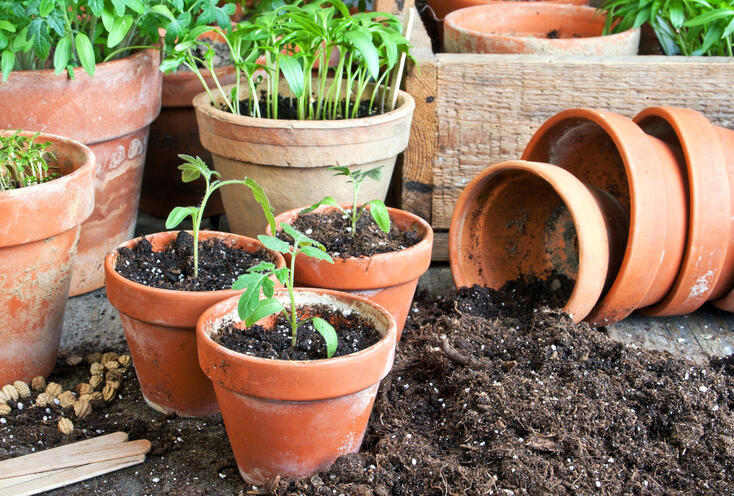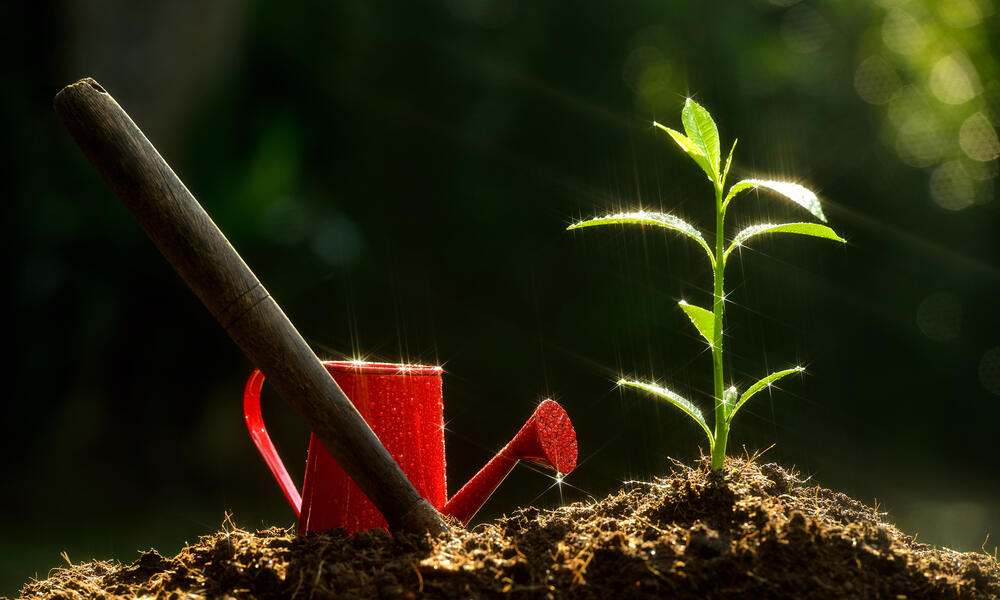Gardening is not witchcraft! With our tips for the perfect potting soil, your garden and houseplants will soon be in full bloom.
A good potting soil is the most important prerequisite for successful plant cultivation and care. Cheap potting soil is often of inferior quality – it is not structurally stable, clumps, and the nutrient information often does not correspond to reality, as various horticultural testing institutes have proven.
Good potting soil, on the other hand, is loose and crumbly so that air can reach the roots and moisture does not accumulate. So it’s better to pay a little more to ensure that your green favorites stay healthy for a long time. But how do you find the right potting soil?
Contents
Potting soil for pot and tub plants
One rule for plants that stand in tubs or pots for a long period of time is that a correspondingly high component of mineral constituents must be added to the potting soil. They prevent the substrate from slumping over the years due to decomposition processes of organic components and losing its pore volume. Therefore, commercially available soils for container plants often consist of a mixture of peat, sand, lava or expanded clay. In addition, such soils usually have significantly more weight than normal potting soil.
Soil for sowing and growing
For growing, sowing and pricking out, a particularly fine-crumb potting soil is important. It must be loose, guarantee good water drainage and must not contain too many nutrients, otherwise the small plantlets will not be able to develop a strong root system. In addition, the seeds should ideally emerge at the same time and produce uniformly strong seedlings. Unfortunately, in these growing, sowing or pricking out soils, it is difficult to avoid peat, because most of the substitutes have a coarser texture or higher salt content, which is harmful to the tender seedlings.

Potting soil for rhododendrons and bog plants
Bog bedding plants such as rhododendrons, blueberries or azaleas are sensitive to lime and like an acidic environment. For this reason, substrates for bog plants or rhododendrons have a low pH and are largely lime-free. These special soils are suitable for soil improvement for those garden areas where you want to plant bog plants, but also for pot culture. By the way, a rhododendron soil is also needed if you want to plant blueberries in the garden. As heather plants, the berry bushes are also very sensitive to lime and need a humus-rich, loose soil.
Substrate for orchids
Orchid soil consists largely of pieces of bark. They give the roots good support and loosen the substrate. In addition, the soil contains coconut fiber, peat, sometimes orchid fertilizer and granules. The granules allow the water to drain off well – no waterlogging forms – and sufficient air reaches the roots. Planted in normal potting soil, the orchids rot, because the roots of the perennial plants have a very high air requirement.
Soil for bonsais
Normal potting soil is not suitable for small bonsai trees. They grow in very small containers, so the soil must be able to store nutrients and water particularly well. In addition, it must allow sufficient air to pass through and provide the little tree with a certain stability. Otherwise, the bonsai would have to be attached to the container with wire. The best soil is a mixture of peat, sand and clay in the ratio 2:4:4.

Soil for cacti
Normal potting soil is not suitable for most cacti, as it contains too much humus and too many nutrients. Special cactus soil is better: it has a high mineral content and at the same time is very low in humus. So that the cacti do not have to struggle with waterlogging, cactus soil also often has a high proportion of lava grit, expanded clay or pebbles.
Soil for the pond
Pond soil is also a special case: it must neither float nor cloud the pond water. In addition, it must not be too rich in nutrients, because this would promote the formation of algae. Conventional potting soil containing humus is thus not suitable for planting the pond. In most cases, pond soils are substrates with a very high clay content. If you do not want to use special soil in your pond, you can also use gravel or lava chippings.
Organic soil
Organic soils are potting soils whose substrates contain purely organic fertilizers, such as horn shavings. However, the organic seal says nothing about the peat content of the soil. The use of peat is ecologically questionable because its extraction, especially in Eastern Europe, continues to destroy important ecosystems and is partly responsible for the disappearance of many plant and animal species. In addition, the decomposition of peat releases additional carbon dioxide, which promotes global warming. Rather rely on potting soil that contains peat substitutes such as bark humus, wood or coconut fibers.
Mixing potting soil yourself – this is how it works
In a ratio of 3:2:1, mix about one year old, well-decomposed compost, garden soil and bark humus. It is important that you sift the compost and garden soil beforehand. Tip: Garden soil, which is well suited for potting soil, provide the moles in your garden – simply remove the mounds for this. If you add some organic fertilizer, such as horn shavings, after mixing the potting soil, you will give your plants a good base to grow.










